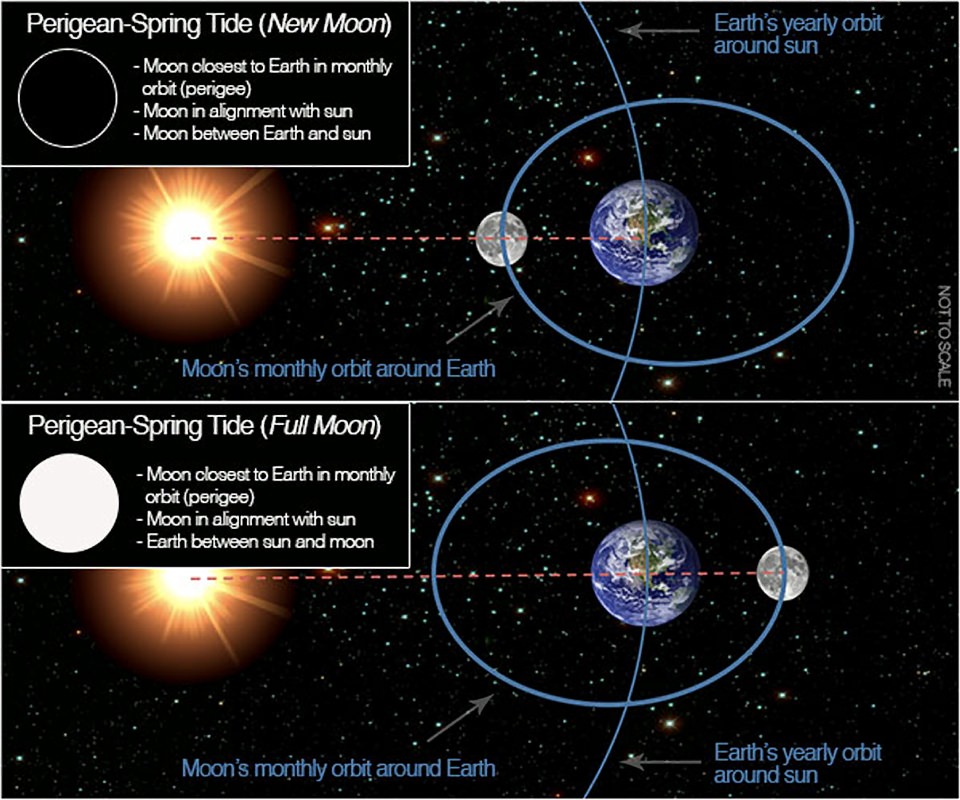
In order to understand the phenomenon called a ‘perigean spring tide,’ you first have to know that the gravitational pull of the moon and the sun cause tides. Tides are actually long-period waves that roll around the planet as the ocean is ‘pulled’ back and forth as the moon and the sun interact with the Earth in their monthly and yearly orbits.
The next thing you need to know is that the moon follows an elliptical path around the Earth in its monthly orbit, and the Earth follows an elliptical path in its yearly orbit around the sun. This means that, at times, the moon and the sun are closer to Earth. At other times, they are farther away. What happens when the moon and the sun are close to the Earth? You guessed it: the gravitational pull they exert is stronger, resulting in slightly higher tides.
While both the moon and the sun influence tides, the moon plays a much larger role because it is so close to the Earth. Its gravitational pull is about twice as strong as that of the sun. Now consider these two cases:
NOAA has the full article









